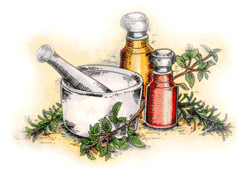 Abdominal Injury Abdominal Injury |
 Achilles Tendon Achilles Tendon |
 Ankle Bone Injury Ankle Bone Injury |
 Ankle Strain Ankle Strain |
 Ankle Synovitis Ankle Synovitis |
 Arm And Shoulder Tenosynovitis Arm And Shoulder Tenosynovitis |
 Arm Contusion, Forearm Arm Contusion, Forearm |
 Arm Contusion, Radial Nerve Arm Contusion, Radial Nerve |
 Arm Contusion, Upper Arm Injury Arm Contusion, Upper Arm Injury |
 Arm Exostosis Arm Exostosis |
 Arm Fracture, Forearm Arm Fracture, Forearm |
 Arm Fracture, Humerus Arm Fracture, Humerus |
 Arm Strain, Biceps Injury Arm Strain, Biceps Injury |
 Arm Strain, Forearm Arm Strain, Forearm |
 Arm Strain, Triceps Arm Strain, Triceps |
 Arm Strain, Upper Arm Arm Strain, Upper Arm |
 Back, Ruptured Disk Injury Back, Ruptured Disk Injury |
 Back Sprain, Lumbo Dorsal Region Injury Back Sprain, Lumbo Dorsal Region Injury |
 Back Sprain, Sacroiliac Region Injury Back Sprain, Sacroiliac Region Injury |
 Back Strain, Dorsal or Thoracic Spine Region Back Strain, Dorsal or Thoracic Spine Region |
 Back Strain, Lumbar Spine Region Back Strain, Lumbar Spine Region |
 Bee Sting Bee Sting |
 Bladder or Urethra Injury Bladder or Urethra Injury |
 Breast Contusion Breast Contusion |
 Breastbone Sprain Breastbone Sprain |
 Burns Burns |
 Buttock Contusion Buttock Contusion |
 Chest Muscle Strain Chest Muscle Strain |
 Collarbone Area Strain, Deltoid Muscle Collarbone Area Strain, Deltoid Muscle |
 Collarbone (Clavicle) Contusion Collarbone (Clavicle) Contusion |
 Collarbone Dislocation - Shoulder Joint Collarbone Dislocation - Shoulder Joint |
 Collarbone Fracture, Outer End Collarbone Fracture, Outer End |
 Collarbone Fracture, Shaft Midportion Collarbone Fracture, Shaft Midportion |
 Corneal Abrasion Corneal Abrasion |
 Dog Bites Dog Bites |
 Ear Injury Ear Injury |
 Elbow Bursitis, Radio-Humeral Elbow Bursitis, Radio-Humeral |
 Elbow Contusion, Ulnar Nerve Elbow Contusion, Ulnar Nerve |
 Elbow Contusion Elbow Contusion |
 Elbow Dislocation Elbow Dislocation |
 Elbow Fracture, Coronoid Process Elbow Fracture, Coronoid Process |
 Elbow Fracture, Epicondyle Elbow Fracture, Epicondyle |
 Elbow Fracture, Lower Humerus Elbow Fracture, Lower Humerus |
 Elbow Fracture, Radius Elbow Fracture, Radius |
 Elbow Fracture, Ulna Elbow Fracture, Ulna |
 Elbow Sprain Elbow Sprain |
 Elbow Strain Elbow Strain |
 Elbow Tendinitis or Epicondylitis Elbow Tendinitis or Epicondylitis |
 Eye Injury Eye Injury |
 Face Contusion Face Contusion |
 Snakebite Snakebite |
 Spider Bites Spider Bites |
 Tick Bites Tick Bites |
|
|
Home :: Back Sprain, Lumbo Dorsal Region
Back Sprain, Lumbo Dorsal Region
Violent overstretching of one or more ligaments in the lumbo-dorsal vertebrae of the spine. This is the most stable section of the vertebral column. Sprains involving two or more ligaments cause considerably more disability than single-ligament sprains. When the ligament is overstretched, it becomes tense and gives way at its weakest point, either where it attaches to bone or within the ligament itself. If the ligament pulls loose a fragment of bone, it is called a sprain-fracture. There are 3 types of sprains:
- Mild (Grade 1) - Tearing of some ligament fibers and associated muscle spasm. There is no loss of function.
- Moderate (Grade II) - Rupture of a portion of the ligament, resulting in some loss of function.
- Severe (Grade III) - Complete rupture of the ligament or complete separation of ligament from bone. There is total loss of function. A severe sprain requires surgical repair.
BODY PARTS INVOLVED
- Any of the many ligaments connecting the vertebrae in the lumbo-dorsal spine.
- Tissue surrounding the sprain, including blood vessels, tendons, bono, periosteum (covering of bone) and muscles
Causes
Stress on a ligament that temporarily forces the lumbo-dorsal vertebrae out of their normal location. A sprain of the lumbo-dorsal vertebrae will frequently occur when a stressful act is performed when the athlete is off-balance, or during repeated stressful activity involving muscles in the lumbo-dorsal area.
Signs & Symptoms
- Severe pain at the time of Injury.
- Popping or feeling of tearing In the back.
- Tenderness at the Injury site.
- Swelling in the back.
- Bruising that appears soon after injury
Treatment
Follow your doctor's instructions. These instructions are supplemental.
If your doctor does not apply a cast, tape or elastic bandage:
- Continue using an ice pack 3 or 4 times a day. Place ice chips or cubes in a plastic bag. Wrap the bag in a moist towel, and place it over the injured area. Use for 20 minutes at a time.
- Wrap the injured area from the top of the hip to the lower rib cage with an elasticized bandage between ice treatments.
- After 72 hours, apply heat instead of ice if it feels better. Use heat lamps, hot soaks, hot showers, healing pads, or heat liniments or ointments.
- Take whirlpool treatments, if available.
- Massage gently and often to provide comfort and decrease swelling.
- Ask your doctor about the advisability of using a special corset.
Home Diet
During recovery, eat a well-balanced diet that includes extra protein, such as meat, fish, poultry, cheese, milk and eggs. Increase fiber and fluid intake to prevent constipation that may result from decreased activity.
Prevention
- Build your strength with a conditioning program appropriate for your sport.
- Warm up before practice or competition.
- Tape vulnerable joints before practice or' competition to prevent reinjury.
back to injuries section
|
|


